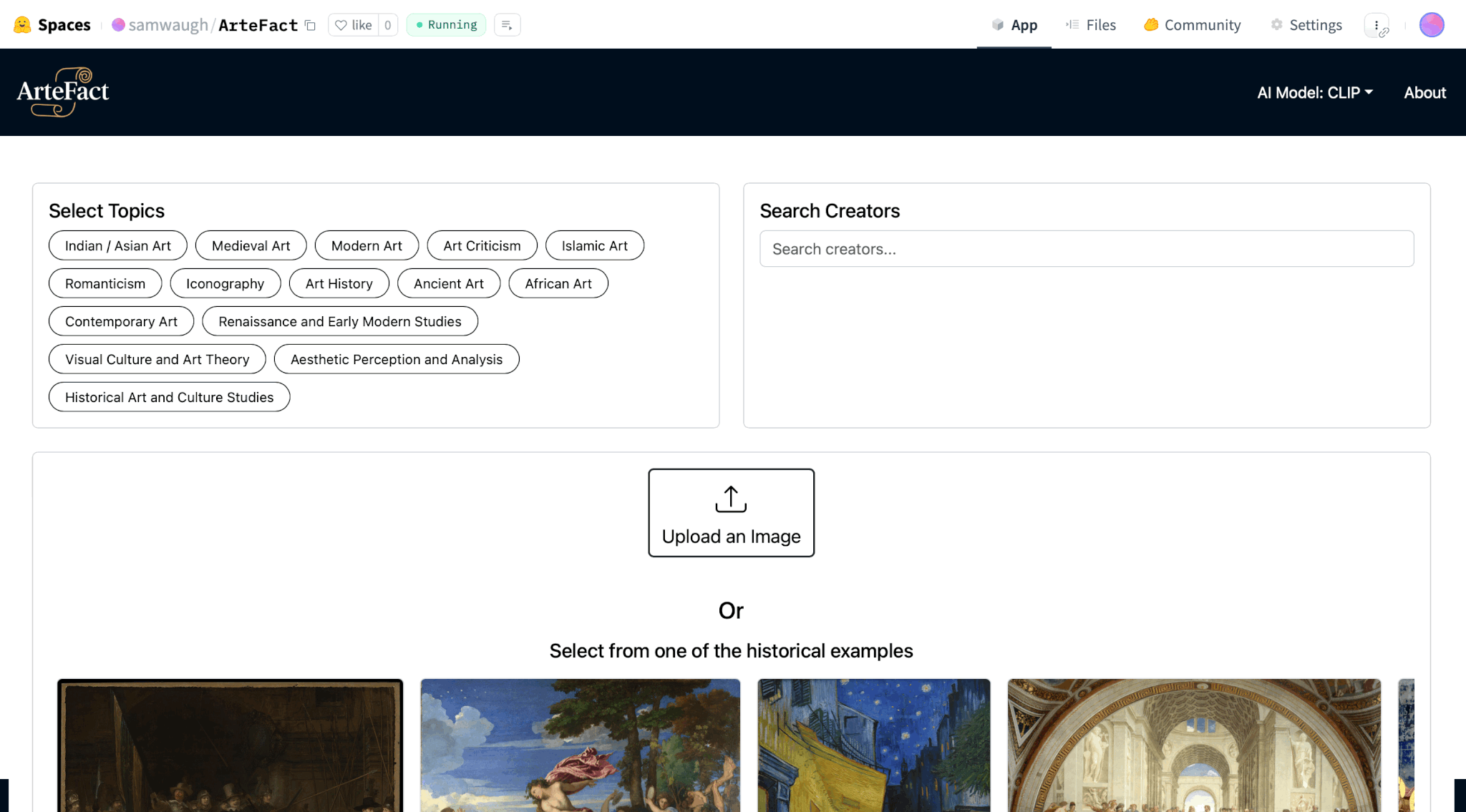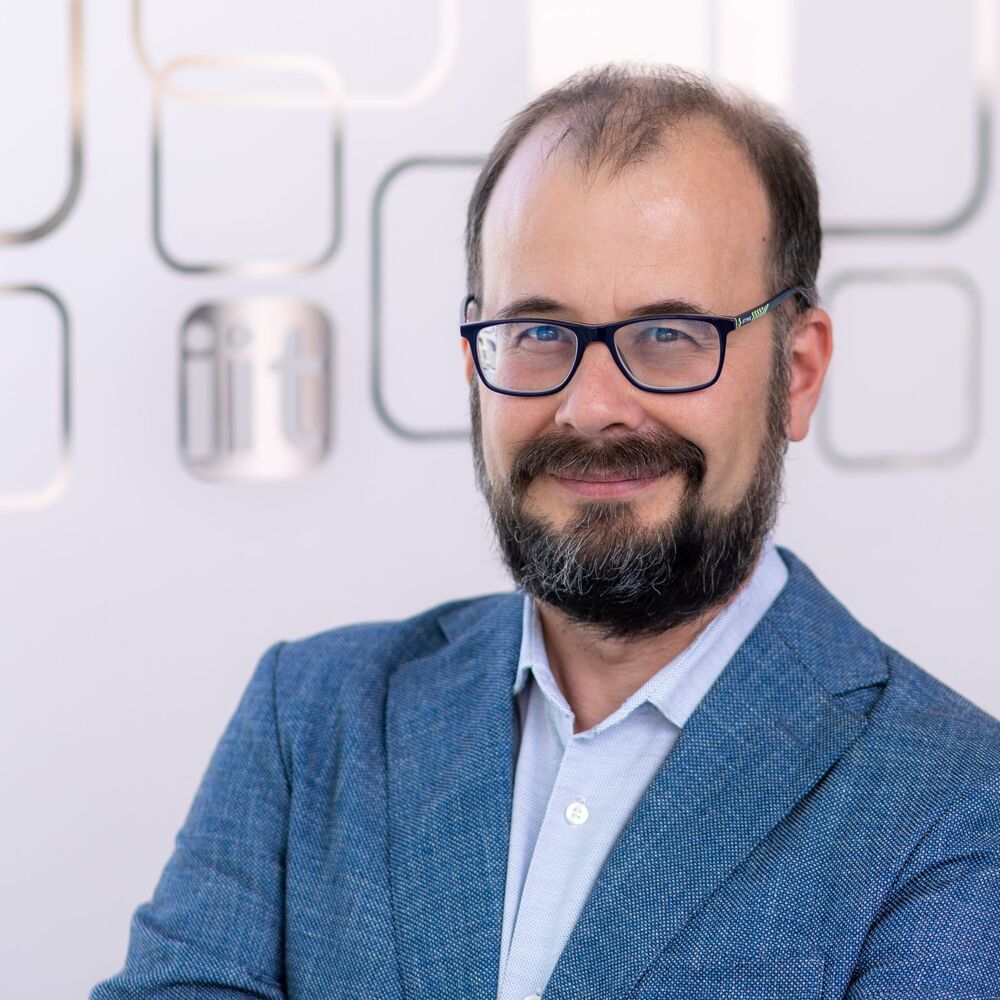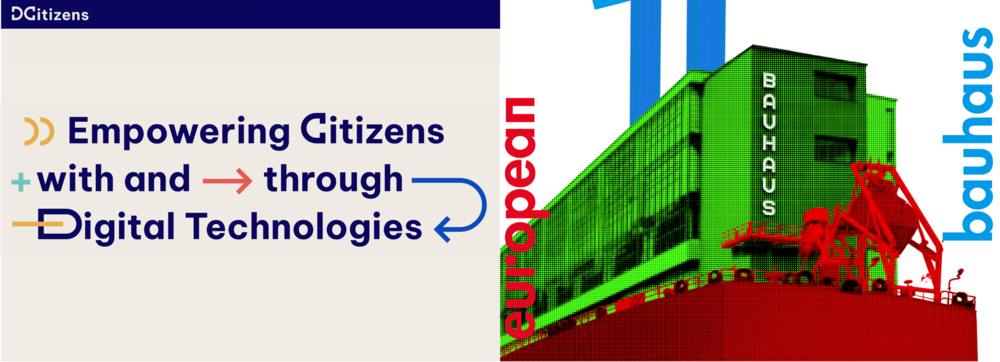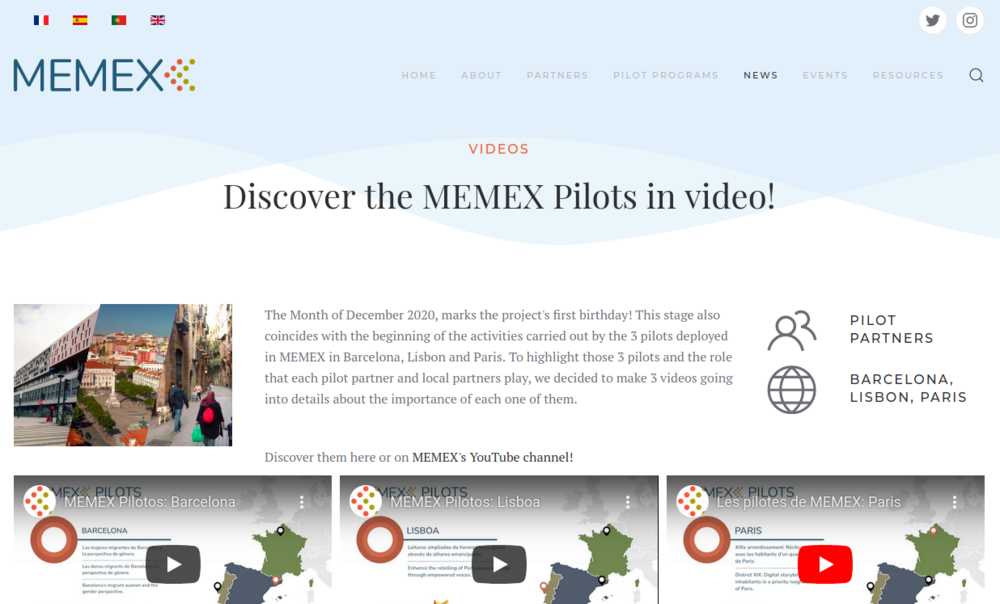03 Oct 2025
.
research
.
Samuel Waugh's N8 CIR Summer Internship leads to Development of new AI Tool for Art Contextualisation
Comments
This summer, Durham University Computer Science student Samuel Waugh completed a research internship with the N8 Centre of Excellence in Computationally Intensive Research (N8 CIR) under my supervision. Over the course of the project, Samuel designed and developed ArteFact, an innovative web-based tool that helps art historians and cultural researchers uncover meaningful connections between paintings and scholarly writing.
At the core of ArteFact is a domain-adapted CLIP model, trained on an open-access art history corpus. This enables the system to embed sentences from scholarly texts and recommend the most relevant passages in response to a user-uploaded painting. The platform integrates a range of features, including:
- Interactive image cropping for targeted analysis
- Saliency map generation to highlight important visual regions
- Contextualised sentence viewing showing extracted text in its original source
- Instant access to open access works linked to the findings
- Citation export for proper scholarly acknowledgement
The project was shaped through co-design workshops with Durham’s Institute of Medieval and Early Modern Studies (IMEMS). Feedback from humanities scholars ensured that the tool is not only technically sophisticated but also genuinely useful to its intended audience.
What impressed me most was how quickly Samuel was able to translate a complex research idea into a usable system. He showed real creativity, technical skill, and an ability to think carefully about end users – qualities that will serve him very well in his career.
A demo version of ArteFact is now available to explore online: https://huggingface.co/spaces/samwaugh/ArteFact
02 Oct 2025
.
research
.
Welcome Professor Alessio Del Bue to Durham — Strengthening Our Collaboration
Comments
We are delighted to welcome Professor Alessio Del Bue to Durham University in his newly conferred role as Honorary Professor in the Department of Computer Science. His appointment marks an exciting new chapter in our long-standing and evolving collaboration.
Professor Del Bue, a Senior Researcher at the Italian Institute of Technology (IIT) in Genoa, brings to Durham a wealth of expertise in computer vision, artificial intelligence, and multimodal data analysis.
He leads the PAVIS (Pattern Analysis & Computer Vision) research line at IIT, spearheading research in 3D reconstruction, AI-driven interpretation of visual data, and human-centred vision systems.
This new honorary position at Durham is not only a recognition of his scientific stature but also a signal of our commitment to deepen cross-institutional cooperation. It is, in fact, the first Honorary Professorship in the Durham Computer Science Department, making it a landmark appointment. Durham University
What This Means for Our Collaboration
- Joint Research & Projects: We look forward to co-leading proposals, projects, and workshops that connect Durham and Genoa, and more broadly engage with European AI/computer vision initiatives.
- Student & Researcher Exchange: With Professor Del Bue formally linked to Durham, there is new potential for exchange visits, co-supervised PhDs, and joint supervision.
- Interdisciplinary Synergies: His work intersects strongly with visual reasoning, spatial layout understanding, and multimodal AI — areas that resonate with our group’s research on scene reasoning, iconographic signals, and visual query systems.
- Elevating International Profile: Having such a distinguished collaborator formally associated with Durham strengthens our international visibility, particularly in AI, computer vision, and related domains.
In a statement about his appointment, Professor Del Bue said:
“I am honoured to join Durham University as an Honorary Professor and look forward to developing collaborations across the Department and wider University to advance the boundaries of AI and Computer Vision.” Durham University
We echo that sentiment wholeheartedly: we are thrilled at the prospect of deeper collaboration, cross-pollination of ideas, and joint breakthroughs ahead.
Please join us in welcoming Professor Del Bue to Durham. Watch this space for upcoming joint announcements, events, and collaborative initiatives.
18 Jul 2023
.
research
.
New position at Durham University
Comments
As of 1st September 2023, I will be taking up a position as Assistant Professor in Visual Computing at Durham University working in the VIViD group. This marks a major transition for me, as I move from being a contract-based Assistant Professor (or Researcher RTDa in the Italian system) to a permanent member of staff (i.e. Lecturer).
As part of this transition, I’m looking for PhD students to join me in Durham. With an interest in Spatial Reasoning especially in the context of Cultural Heritage and the Arts. To give an idea of the work I’m interested in, I’ve included a brief description of my research interests below. If you are interested in working with me, please get in touch!
Research Focus: Bridging cultural analytics and knowledge graphs via neuro-symbolic reasoning
The ability of AI to provide assistive tools for the inspections and interrogation of humanities data at scale (i.e. distant reading) while preserving fine-grained analysis (i.e. close reading) relies on more than the information in the observation but linking it with the wealth of human experience and knowledge to deduce useful correlations. However, embedding such knowledge within Artificial Intelligence (AI) tools is challenging as it relies on building a complex representation of the meaning behind items or events. Such complex meaning is commonplace in the arts and cultural heritage, where the meaning behind an item (or its depicted content) is highly interlinked with culture and history. Overcoming the disconnect between visual content and knowledge would allow new and impactful insights, helping to shape the future directions of society. In addition, increased access to knowledge through question and answering and its visual equivalent.
05 Feb 2023
.
research
.
Two New EU Projects kicking off 2023: DCitizens & BoSS
Comments
This year we see the kick-off of two new projects Bauhaus of the Seas (BOSS) and DCitizens. Two projects focused on citizens and communities with very exciting prospects. Check them out!
DCitizens project…
DCitizens aims to foster Digital Civics research and innovation in Lisbon. Digital Civics is a cross-disciplinary field that posits the use of technology to empower citizens and non-state actors to co-create, take an active role in shaping agendas, make decisions about service provision, and make such provisions sustainable and resilient. Particularly how digital technologies can scaffold a move from transactional to relational service models and the potential of such models to reconfigure power relations between citizens, communities, and institutions.
Find out more at: https://dcitizens.eu/
Bauhaus of the Seas project…
The vision of the Bauhaus of the Seas is to demonstrate and archive solutions for climate neutrality with a particular focus on coastal cities as an interface to healthy seas, ocean and water bodies envisioning a new triangle of sustainability, inclusion, and design focused on the most important global natural space – our water bodies. The BoS will offer opportunities to engage with communities for an environmentally sustainable, socially fair, and aesthetically appealing transition. Currently, seven cities, located in four different regions and aquatic ecosystems in Portugal (estuary), Italy (lagoon and gulf), Sweden/Germany (strait/river), and the Netherlands/Belgium (delta) have committed to the Bauhaus of the Seas network supporting mission-oriented pilots of the New European Bauhaus and showcase innovative solutions.
Find out more at: https://bauhaus-seas.eu/
03 Dec 2020
.
research
.
Three great videos about the pilot locations of MEMEX
Comments
We recently published three videos on the pilot locations, Paris, Barcelona and Spain, of the MEMEX Project. This challenging collaboration effort came together during the second wave of COVID so a massive effort was needed by the Michael Culture Association, NOHO Limited, Fundacio Interarts per a la Cooperacio Cultural Internacional (InterArts), Mapas das Ideias and Dédale.
About the project…
The MEMEX project promotes social cohesion through collaborative, heritage-related tools that provide inclusive access to tangible and intangible cultural heritage and, at the same time, facilitate encounters, discussions and interactions between communities at risk of social exclusion. These tools will empower communities of people with the possibility of welding together their fragmented experiences and memories into compelling and geolocalised storylines using new personalised digital content linked to the pre-existent European Cultural Heritage (CH). The tools of MEMEX will allow the communities to tell their stories and to claim their rights and equal participation in European society. To this end, MEMEX will nurture actions that contribute to, rather than undermine, practices of recognition of differences by giving voice to individuals for promoting cultural diversity.




